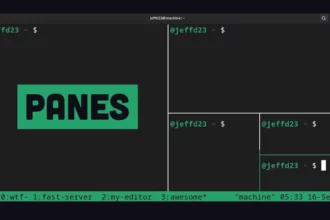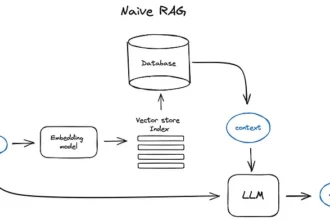When it comes to maximizing the efficiency of a CPU (the brain of your computer), few metrics are as pivotal as Cycles Per Instruction (CPI). Like a well-prepared meal, understanding CPI can spice up your hardware and software performance while providing a thrilling experience for developers and engineers alike.
Welcome to the world of efficient instruction processing – where less is indeed more, and you’ll find that less cycles lead to less frustration!
Table of Contents
ToggleThe Bread and Butter of CPI: What It Is and Why It’s Important
First things first, what exactly is Cycles Per Instruction (CPI)? In a nutshell, CPI is a metric that lets us know how many clock cycles, on average, it takes to execute an instruction in a program. Calculating it is simpler than figuring out how many pies you could eat in one sitting; all you need is:
CPI = Total CPU Cycles / Total Instructions Executed
The lower the CPI value, the more efficient the CPU. Think of it as a direct reflection of the CPU’s prowess. If the CPI is high, it might as well hold a sign that says, “I need help!” indicating potential inefficiencies lurk in code or hardware.
Decoding the Digital Dough: Analyzing CPI Calculation
Basic Calculation
As mentioned above, the uniformity of the CPI calculation hinges on the basic formula. It’s like obtaining a golden ticket to better performance — the lower the ratio, the higher the excellence! But wait, there’s a catch: not all instructions are created equal. Some complex instructions might demand more time (and thus, more cycles) than others. The weighted average formula helps capture this reality:
CPI = Σ (IC_i * CC_i) / Σ IC_i
In this equation:
- ICi is the number of instructions of type i.
- CCi is the number of cycles for instructions of type i.
By understanding these nuances, you can identify what kinds of tasks may be bogging down your performance – much like finding out your personal training routine is mostly snack breaks instead of laps.
Architecture Matters: RISC vs. CISC
When it comes to CPU architectures, we’re faced with two main contenders: RISC (Reduced Instruction Set Computer) and CISC (Complex Instruction Set Computer). It’s like choosing between fast food and a gourmet meal.
- RISC: RISC aims for a lower CPI, thanks to its simplified instruction set. It’s like that friend who always orders the same uncomplicated dish – quick and effective.
- CISC: CISC, on the other hand, often sports a higher CPI due to its more intricate, multi-cycle instructions. Think of it as your overzealous friend who orders everything off the menu, leaving everyone waiting for dinner.
Scalar vs. Superscalar
Now let’s spice things up with Scalar and Superscalar architectures:
- Scalar Processors: These processors execute a single instruction per cycle. They unapologetically strive for a CPI of 1 – straight to the point.
- Superscalar Processors: These lucky beasts can tackle multiple instructions per cycle, possibly bending the rules and achieving less than 1 CPI. You could say they’re the party animals of the CPU world.
Tools of the Trade: Measuring CPI Like a Pro
So how do we measure this elusive CPI? Thankfully, there are some handy tools and methods to help you peek under the hood like a professional mechanic inspecting a sweet ride:
- Hardware Counters: Today’s CPUs are equipped with built-in counters to tally up the cycles and instructions. Your CPU basically has its own counting sheep!
- Software Profiling Tools: Tools like Intel’s VTune and perf help you analyze and visualize your application’s performance, pinpointing hotspots like a keen-eyed hawk spotting a rabbit.
Employing these tools, you’d be able to discern application vulnerabilities that could undermine performance, and act accordingly. Trust me; that enhancement won’t go unnoticed!
CPI Interpretation: High and Low Signal
Now, let’s put our detective hats on and reveal what high or low CPI values might indicate:
What High CPI Indicates
- Poor instruction-level parallelism: Sounds fancy, but it basically means your CPU is not maximizing its potential.
- High memory latency: Think of it as waiting for your browser to load just one more video before you can access your cat memes.
- Inefficient use of CPU resources: Your CPU is like a sports car that never gets off the driveway!
What Low CPI Indicates
- Efficient CPU resource utilization: Congrats, you’ve unlocked the secret of maximized efficiency!
- High instruction throughput: It’s like a production line running seamlessly – delivering goods quicker than your Amazon Prime orders.
- Optimal performance for the given workload: A well-oiled machine!
Optimizing CPI: A Two-Pronged Approach
Whether you’re rocking hardware or controlling software, we need to focus on optimization. Here’s how:
Hardware Improvements
- Increase Clock Speed: By speeding things up, you reduce cycles per instruction. Turn up the dial, and watch it go!
- Improve Cache Performance: Catching that elusive memory access latency can make CPI dance downwards.
- Enhanced Branch Prediction: Like having the upper hand in a poker game, good branch prediction reduces pipeline stalls and improves your CPI.
Software Optimizations
- Optimize Code: Refactoring code with clock cycles in mind can slay inefficient processes!
- Parallelization: Utilize multi-threading like a pro – it’s all about maximizing resource utilization!
- Vectorization: Leverage SIMD (Single Instruction, Multiple Data) instructions to process multiple data points at once. It’s like speeding through a buffet line!
Case Study: A Quest for Adequate CPI in a Multi-Threaded Application
Let’s dive into a practical case where high CPI created havoc:
Background
Here, a multi-threaded application struggled under the weight of high CPI, signaling inefficiency in utilizing CPU cores like a slacker at a beach resort.
Problem Statement
High CPI meant longer execution times, leaving us perplexed – something had to change!
Solution and Results
After thorough optimization, the workload was parallelized, and data structures refined. Post-fix, we witnessed a dramatic decrease in CPI and witnessed an enhancement in performance. It was like a transformation from summer sizzle to winter wonderland!
CPI in the Modern World of CPUs
Welcome to the world of multi-core processors! Modern CPUs flex their multi-core muscles, handling numerous instructions concurrently. If your workload is parallelized effectively, guess what? You may just experience a significant drop in CPI.
Hyper-Threading: Unlocking Hidden Powers
With hyper-threading technology, a single core can execute multiple threads, ensuring improved CPU utilization and thus reducing CPI for multi-threaded applications. It’s like opening a box of chocolates, and finding they’re all your favorites!
Common Challenges in CPI Analysis
No great journey is devoid of challenges, and CPI analysis is no different.
Pipelining Issues
Pipelines can suffer from stalls, hazards, and poor instruction scheduling, resulting in a dilapidated CPI. Time for a tune-up!
Instruction-Level Parallelism
Limited parallelism can hinder a CPU’s execution of multiple instructions per cycle, resulting in increased CPI. So, we must make sure our precious processor is being used effectively.
Best Practices for Optimizing CPI
It’s time to roll up your sleeves and dive into efficient coding practices:
- Minimize Branches: Cut unnecessary conditional branches. Less branching means more straight pathways, minimizing stalls.
- Use Inline Functions: By inlining small functions, you avoid the overhead of function calls and speed up execution.
Hardware Utilization Strategies
- Load Balancing: Ensure an even distribution of workloads across all cores to maximize CPU utilization. Teamwork makes the dream work!
- Thread Affinity: Binding threads to specific cores minimizes context switching and enhances cache locality. Basically, it’s about making families stick together!
Wrapping It Up: The Bottom Line on CPI
Cycles Per Instruction (CPI) isn’t just a technical metric – it’s the backbone of computer architects, providing crucial insights into CPU efficiency and performance. Understanding how to measure, interpret, and optimize CPI can lead to significant hardware and software friendliness. After all, when it comes to computing bliss, achieving harmony between hardware and software is the ultimate goal.
Key Takeaways
- Understanding CPI: Essential for assessing CPU efficiency and performance.
- CPI Calculation: A simple yet essential ratio offering deep insights into CPU utilization.
- Importance in Architecture: A vital indicator of optimization potential in hardware and software.
- CPI Variations: Notable differences in CPU architectures (RISC and CISC) lead to varied CPI experiences.
- Measurement Tools: Valuable assessment tools like hardware counters and software profilers assist in CPI analysis.
- Interpretation Signals: High CPI signals inefficiencies, while low CPI reflects optimal resource utilization.
- Optimization Techniques: Strategies exist that span both hardware enhancements and software optimizations.
- Modern CPU Dynamics: Multi-core processors and hyper-threading greatly impact CPI through enhanced parallelism.
FAQs
What is CPI in computer architecture?
CPI, or Cycles Per Instruction, measures the average number of clock cycles required to execute an instruction.
How is CPI calculated?
CPI is calculated by dividing the total number of CPU cycles by the total number of instructions executed.
Why is CPI important?
CPI is critical for understanding and optimizing CPU performance, as it indicates how efficiently instructions are executed.
What affects CPI?
Factors affecting CPI include the instruction mix, memory access patterns, CPU architecture, and levels of parallelism.
How can I reduce CPI?
Enhance CPI through hardware improvements (such as better cache performance), software optimizations (like parallelization), and efficient coding practices.
Can CPI be less than 1?
Absolutely! In superscalar processors that execute multiple instructions per cycle, a CPI of less than 1 is not just possible but exemplary.
What tools are used to measure CPI?
Tools like Intel VTune, perf, and hardware counters in modern CPUs are integral for measuring and analyzing CPI.
How does CPI relate to other performance metrics?
CPI is inversely related to instructions per cycle (IPC) and directly affects execution time and throughput.
Article Sources
- Intel VTune Profiler
- Perf: Linux Performance Profiler
- Computer Architecture: A Quantitative Approach by John L. Hennessy and David A. Patterson
- Understanding CPI in Computer Architecture
- Measuring and Understanding CPI
- RISC vs. CISC Architectures
- Optimizing CPI through Hardware Improvements
- Superscalar Processors
- Hyper-Threading Technology
Remember, the key to realizing the potential of your CPU could very well hinge on the magical world of CPI!




